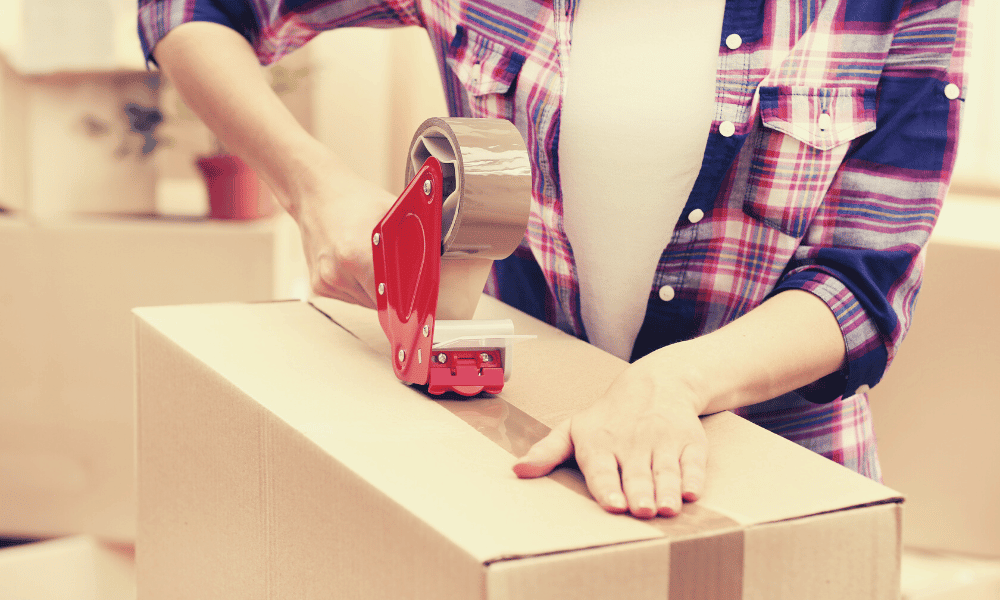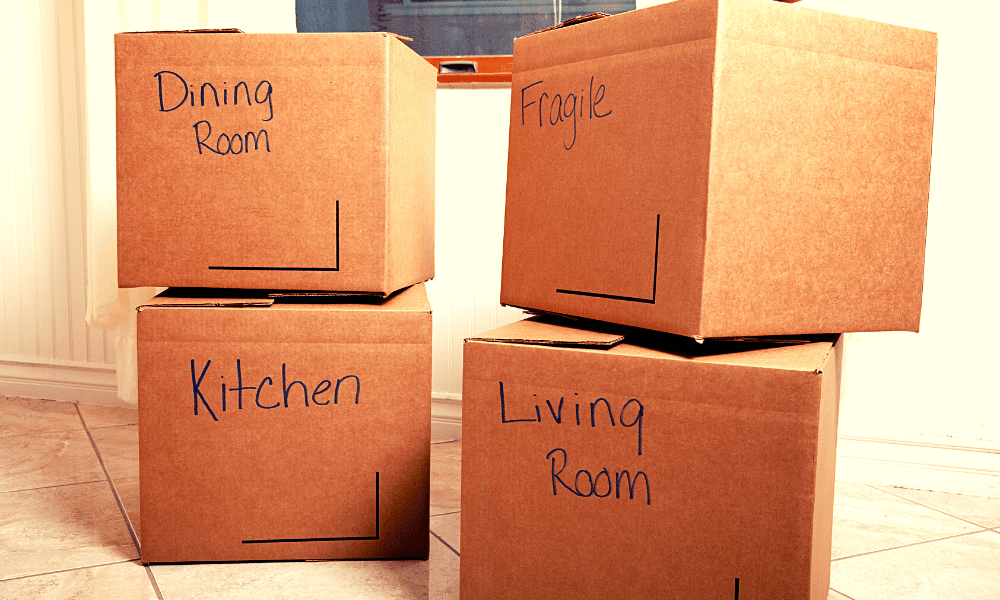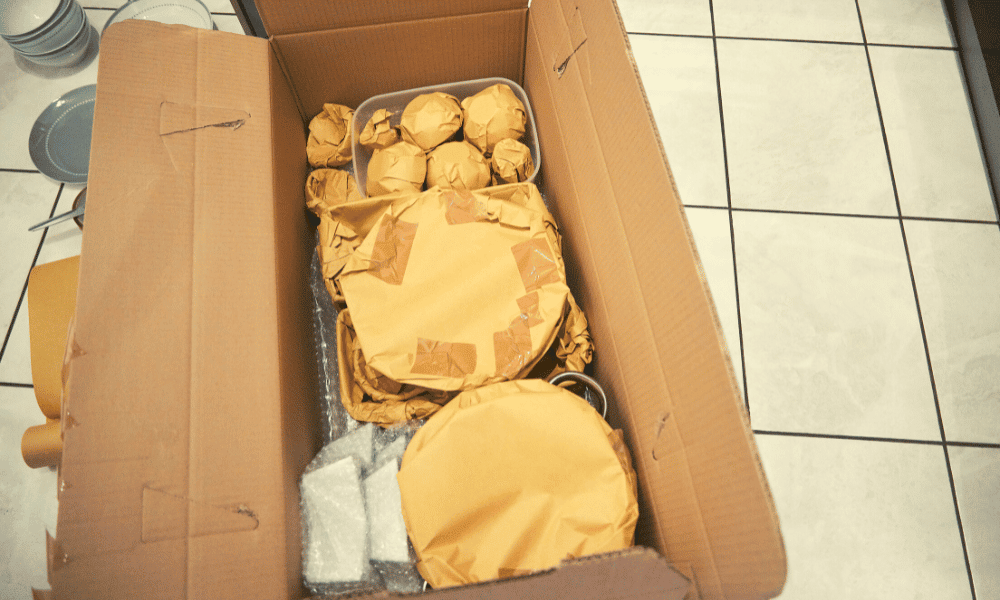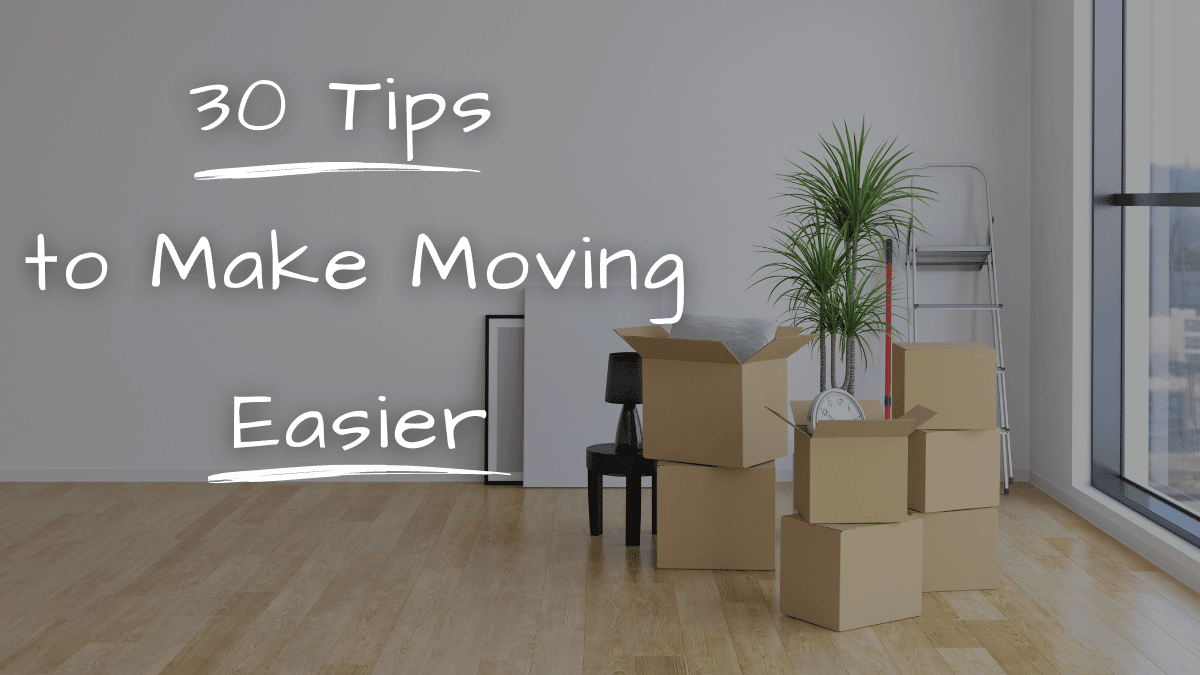30 Tips to Make Moving Easier
Now that you have finished all the steps to sell your home, it is now time to pack up your belongings and start moving into your new home. You’ll soon be able to relax in your new space before you know it once you know how to pack boxes.
One of the most difficult trials nearly everyone has to face is moving. Although it can be unpleasant and not always fun, it often leads to a positive outcome.
Moving is a difficult task. Avoiding mistakes and planning ahead is key to success.
Get Ready
There are many tried-and-true tips that can make moving easier, as almost everyone moves at some point. A moving checklist will help you ensure everything is in order before, during, and after your move. Another good tip for moving is to have a positive attitude about the future.
Moving tips can be divided into two categories. Some will focus on packing a moving truck efficiently, others will remind you to cancel certain services or to arrange for things to arrive at your new home.
Others will give reminders to make arrangements to have items prepared for you. Still, other tips may focus on details such as pet care or what to do if the movers are late. However, the most important tips for moving are those that relate to the actual move.
Many things can go wrong when moving. There are many moving details, so there is no one-size fits all guide that will give you moving tips for every scenario. There will be specific concerns and needs for different people. For example, how to pack china, and safely move valuable wood furniture or fragile heirlooms.
This list of tips and tricks should help you in most cases. You will be able to move faster, more efficiently, and with less hassle, if you take a look at these moving tips.
Moving Tips, Tricks, and Advice
1. Make a Timetable or Schedule First
It is easy to put off things until the last minute when you panic and realize that you are not ready for moving day. You can avoid the last-minute rush by planning how much time and how long it will take to pack each space and creating a schedule that includes enough time.
Planning and preparation should begin at least a month in advance of your move. To make the move easier, create a moving checklist and start following it as soon as possible.
2. Make a moving day supply kit
Make sure you have a complete supply kit for moving day as you pack up your old home. You can keep the following items in one place:
- Box cutters
- Garbage bags
- Rubber bands
- Ziploc plastic bags
- Cleaning spray
- Use paper towels
These items are very useful and will be of great help to you on your move.
3. Eliminate everything
It can be difficult to pack all your belongings into bags and boxes. Declutter your home wherever possible to make it easier. Do a thorough purge of all unnecessary and unneeded items before you start packing.
This will make it easier to pack, move and unpack less. You will also have a fresh start in your new space.
4. Make a moving file
You can start collecting new addresses, rental papers, purchase papers, and moving contracts in one folder. In case your phone or computer fails, keep a hard copy of everything you need. You’ll be able to answer any questions during the planning or actual move.
5. Pack as far ahead as you can
The idea is to know about your move weeks, or even months ahead of time. You should start by packing out-of-season items, and those you will not miss. You can pack winter coats, books, and once-in-a-while items in advance if you are moving during summer.
Many items will be packed and ready to go when it comes time to move. This makes it less stressful.

6. Only pack what you need and want for your new place
To determine what you can donate, take a hard look through your closets. Don’t keep items that haven’t been used in years. You can sell or give away items you don’t want on Craigslist.
It will reduce your burden and help you save time by getting rid of unwanted items.
7. Book early
Book early if you are looking to hire moving services, rent supplies, or hire professionals like painters and cleaners to work on your house.
If you wait, you might end up paying more or not being able to get a truck or movers, especially if it is peak season.
8. Take only the essentials
The night before you move, make sure you have all your essentials, such as a change of clothes and a toothbrush.
Also, be sure to bring any paperwork or stuffed animals for the kids that you need, along with medications. In case of an emergency, you will have some things to help you get through it.
9. Make sure to pack an “Open Me First” box
To ensure you are able to live in your new home for the first night, pack one moving box. Personal items as well as toilet paper, toothbrushes, sheets, blankets, and prescriptions are all important.
You might be tempted just to randomly go through your boxes in an attempt to locate them in a crisis.
10. Invest in Equipment
Stock up on supplies a few days before your big move. It’s not a good idea to run to the grocery store when you are packing boxes and moving stuff around. Buy or order box cutters, adhesive bandages and permanent markers, packing tape, garbage bags, paper towels, and packing tape. They’re still useful if they’re not used during the move.
Renting larger moving equipment from a company is a good option. If you hire a mover, they will likely have their own. These tools may be more useful if you are moving frequently. You can either rent, buy, or borrow furniture dollys, furniture covers, tie-down straps, and furniture pads.
11. Use the correct size boxes
Books and other heavy objects should be packed in small boxes. Lighter items like pillows and linens can be packed in larger boxes. Professional movers are often annoyed by large boxes containing heavy items.
These boxes not only make the job more difficult but also offer a greater chance of being broken.

12. Label your boxes clearly by room
You will save time and avoid wasting your time moving boxes around. To avoid writing “Living Room” 10 times on every box, you can use a color-code system for labeling.
You can make sure that your movers load cardboard boxes correctly by assigning each box a color that corresponds with a particular room in your house.
13. Find out What’s in Each Box
Note down the contents of each box. Instead of remembering which box they were in, you might be able to quickly access your everyday dishes. Your smartphone can be used to take photos of contents before taping them up.
To number each photo, you can use the photo editing tools on the phone. Write down the number of each box and what’s inside it in a notebook.
14. Do not make boxes too heavy
Even if you have hired movers, they won’t be supermen. You can save your back and theirs by making sure that you use the right-size moving boxes.
To make it easier to transport heavy, dense items such as books, you can place them in smaller boxes.
Place fragile items in small boxes to avoid stacking them on top. To prevent them from becoming overloaded, pack light items in large boxes.
15. Keep clothing in your dresser drawers
Your drawers should not be empty. This packing tip will allow you to move your clothes and other non-breakable items from your dresser. Shrink wrap the dresser.
The plastic prevents drawers from slipping during transit. Once you arrive at your new home, take the packaging out and it is ready to go.
16. Keep Clothes on Hangers
Leaving clothes on hangers will make it easy to transport and set up your clothes in your new home. Depending on how bulky your clothes are, group them by five to six hangers and wrap them in large garbage bags.
You can also use a wardrobe box with a metal hanger bar to store several clothes and hangers. When you arrive at your new place, transfer your clothes directly into your closet.
17. Ask your mover for special crating if you are moving valuable art.
To ensure that your artwork is safe, you need to know how to pack it. Oil paintings should not be wrapped in regular paper. They will stick. To strengthen the glass and keep it from shattering, you can make an X using masking tape to pack them.
Wrap the pictures in bubble wrap or paper and place them in a box with a piece of cardboard between each frame.
18. Do not leave any empty spaces in boxes
You can fill in the gaps with clothes, towels, and packing paper. Unbalanced or loosely packed boxes are often not allowed to be moved by movers.

19. Pack your kitchen carefully for the move
There are many items that you need to pack in your kitchen. How to pack dishes for moving? Wrap each dish in packing paper, and then wrap bundles of five or six with more paper. Always pack dishes sideways.
Bunched-up paper can be used as padding. Cups and bowls can also be placed inside each other, with paper between them. Then wrap three to four of them in a bundle. You can pack them all in dish-barrel containers.
To protect glasses when moving, wrap them in layers of paper and place them in a cardboard box with cardboard dividers.
20. Your wardrobe should be in order
When you are packing shoes for moving, make sure to protect them from one another. To prevent sharp heels and buckles from damaging your other shoes, wrap each pair of shoes separately. To help shoes retain their shape, you can put socks inside.
You can recycle jewelry when you pack it. To keep your necklaces from getting tangled, string them through straws and toilet paper rolls.
21. You need to change your address immediately
The U.S. Postal Service will send you the “change of address” form or you can fill it out online. They will inform the senders that you have changed your address and forward your mail.
To ensure you receive important mail, update any magazine subscriptions or financial services such as insurance or credit cards.
22. Get a Better Deal on Insurance
Check to see if your existing insurance policies still cover you, your home, and your auto. You should shop around for the best rates if you change your zip code.
23. Visit the DMV
You will need to register your vehicle if you have moved to another state. However, even if you move to a different city, you still need to obtain a new driver’s license and register to vote. You may be able to request a new ID online if you’re lucky.
24. Do not choose Movers blindly
When it was time to sell your home, you didn’t choose a realtor blindly. The same goes for movers. You can check Yelp or other online reviews to see if the company has treated clients well. You can also ask your family and friends for recommendations.
There are many high-quality moving companies in the industry, but there may be some shady ones.
25. Transition to Other Services
Take a list of all services that you have at your current home. This could include internet, cable or satellite provider, electricity, trash collection, and so forth. You can cancel your current services and have them activated at your new residence.
This usually happens a week before you plan to move. There is nothing worse than being without power for a couple of days because you forgot to call.
26. Choose Full-Value Replacement Protection
You might only get $18 if the moving company offers standard-only coverage for your $500 TV. Full-value replacement coverage provides the best protection for household goods and is the best option.

27. Pick the right size moving truck
Your items could shift and become damaged in a truck that is too large.
- 10 ft. truck = studio or small 1 bedroom
- 12-14 ft. truck = 450 cu. ft. or 1 to 2 bedrooms
- 16-17 ft. truck = 800 cu. ft. or 2-3 bedrooms
- 22-24 ft. truck = 1,200 cu. ft. or 3 to 4 bedrooms
- 26-27 ft. truck = 1,400 cu. ft. or 4+ bedrooms
28. Know your contract
The typical fees include a daily charge for the truck including mileage. Additional fees may include packing supplies, dollies, and insurance. These details should be committed to memory in order not to get caught unprepared.
29. Make sure you have a plan for young children and pets
Arrange for pet sitting and babysitting on-site. The activity can stress your pets and cause boredom for the kids. You can save yourself from the stress and make alternative arrangements for them.
30. Take your time
It is best to think about where each item should go before you begin to unpack. To determine if an item belongs in your new home, you can put it in a separate box called “decision”. You can put that box in storage and, as time passes, you will decide if those items should go to charity.









